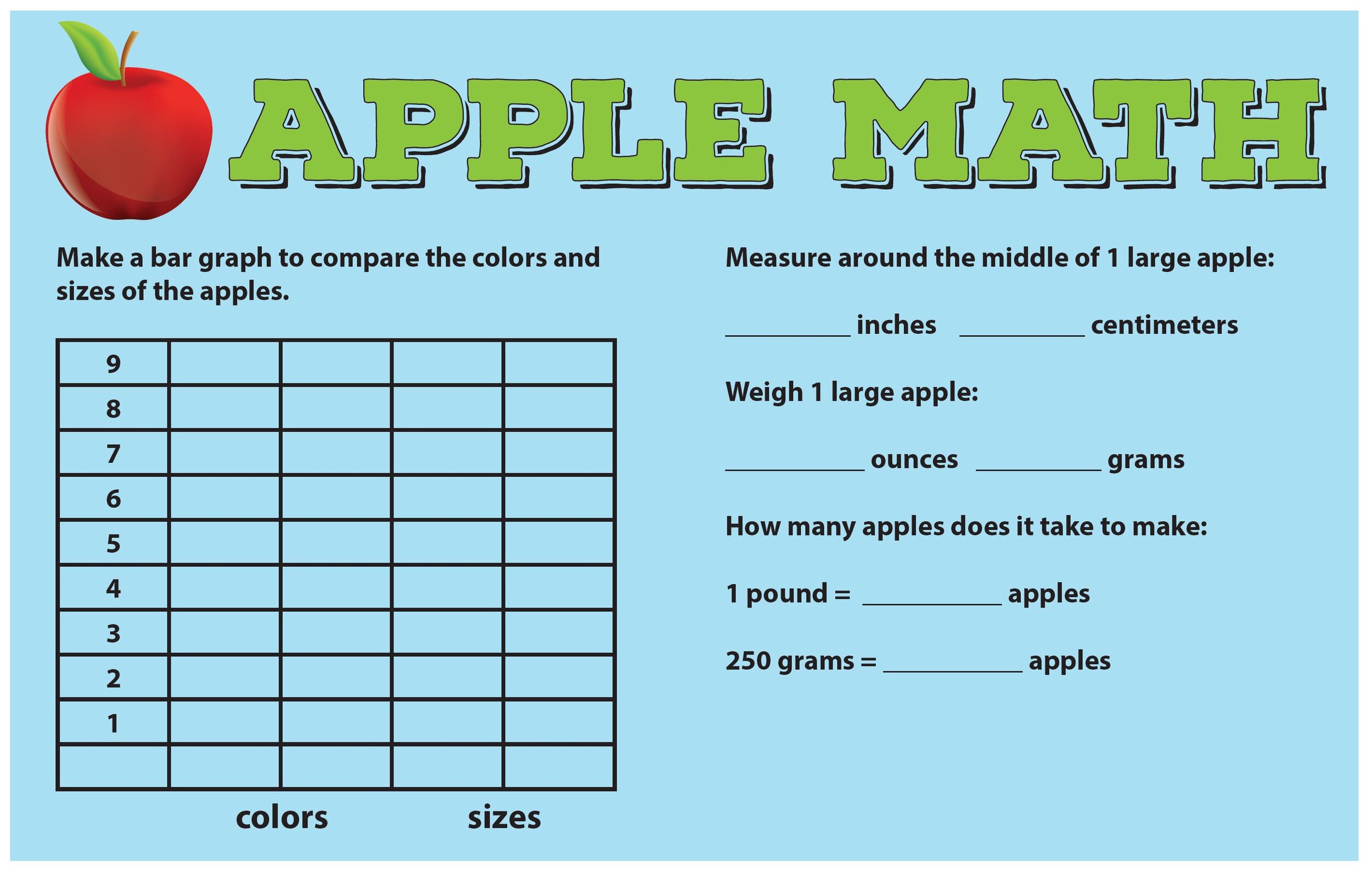Apple Math
These are fun companion activities to the Kentucky Farms Feed Me Virtual Field Trip - Apple Orchard video. Student may also want to watch how commercial apples are prepared for sale.
Kindergarten
Click on the image for the Google Slide activity. Be sure to copy it to your Drive or Classroom to manipulate the apples and share with your students.
K.CC.3 - Write numbers from 0 to 20. Represent a number of objects with a written numeral 0-20.
K.CC.5 - Count to answer “how many?” questions about as many as 20 things arranged in a line, a rectangular array, or a circle, or as many as 10 things in a scattered configuration; given a number from 1-20, count out that many objects.
K.MD.2 - Directly compare two objects with a measurable attribute in common, to see which object has “more of”/“less of” the attribute, and describe the difference.
K.MD.3 - Classify objects into given categories; count the numbers of objects in each category and sort the categories by count.
1st Grade
Click on the image for the Google Slide activity. Be sure to copy it to your Drive or Classroom to manipulate the apples and share with your students.
1.OA.3 - Apply properties of operations as strategies to add and subtract.
1.OA.5 - Relate counting to addition and subtraction.
2nd/3rd Grade
Materials
Dry erase markers
Measuring tape that bends easily - inches/cm
Kitchen scale that will weigh in both grams and ounces
10 to 15 apples of varying sizes and colors
Procedures
Let students work in groups to sort the apples by size and color and then fill in the bar chart. Use the dry erase markers. Then ask the following questions:
Are there more red apples or green apples?
What is the difference between small and large apples?
Next, give each pair of students a large apple and a measuring tape. Ask them to measure around the middle of the apple in both inches and centimeters. Ask - Why do we need to know how large an apple is? Say - Apples are sorted by size before sale.
Now set up a weigh station. Have students weigh one apple in ounces and grams. You will need to help them switch between lb./oz. and grams units. Then let them add enough apples on the scale to reach 1 pound (approximate - it does not have to be exact) and 250 grams (approximate).
Standards
2.MD.1 - Measure the length of an object by selecting and using appropriate tools such as rulers, yardsticks, meter sticks and measuring tapes.
2.MD.10 - Create a pictograph and a bar graph (with single-unit scale) to represent a data set with up to four categories. Solve simple put together, take-apart and compare problems using information presented in a bar graph.
3.MD.2 - Measure and solve problems involving mass.
4th/5th Grade
Materials
Dry erase markers
Measuring tape that bends easily - inches/cm
Kitchen scale that will weigh in both grams and ounces
1 large apple for each group
Procedures
Design a Box - Provide groups with an apple and a measuring tape and ask them to design a shipping box that will hold 12 apples.
Students must first decide how to pack the apples (single layer of 4 x 3 or 6 x 2, etc.), then they will measure the dimensions around the apples. Check to see what they come up with. Answers will vary, but the apples must fit.
Ask 5th grade students to find the volume of their box. Allow them to use a calculator. If they measured correctly, the volume should be between 360 and 400 inches cubed.
Estimating Mass - Ask students to weigh one apple in ounces and then determine how many 12 apples will weigh. Ask 5th grade students to convert to pounds by dividing their answer by 16 oz.
Interpreting Data - Have students answer the questions in the graph provided.
Graphing Answers:
1500 pounds
Fuji
2000 & 2010
300 pounds
Standards
4.NBT.5 - Multiply whole numbers
4.MD.2 - Use the four operations to solve word problems involving distances, intervals of time, liquid volumes, masses of objects and money. Visually display measurement quantities using representations such as number lines that feature a measurement scale.
4.MD.3 - Apply the area and perimeter formulas for rectangles in real world and mathematical problems.
5.MD.1 - Convert among different size measurement units (mass, weight, liquid volume, length, time) within one system of units (metric system, U.S. standard system and time).
5.MD.2 - Identify and gather data for statistical questions focused on both categorical and numerical data. Make observations from the graph about the questions posed.
5.MD.5 - Relate volume to the operations of multiplication and addition and solve real world and mathematical problems involving volume.
Engineering & Design




